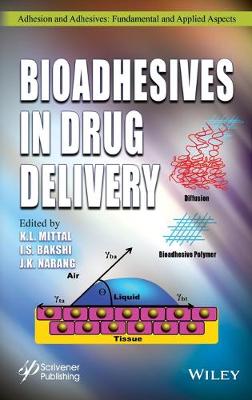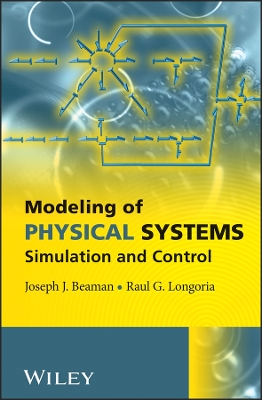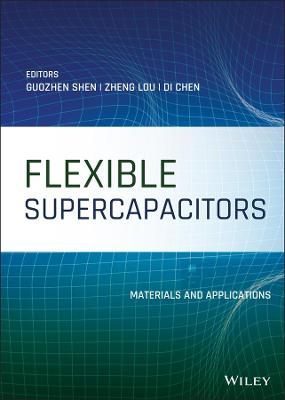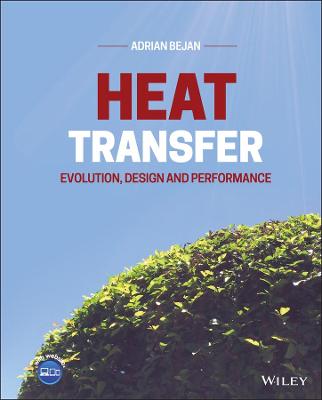Bioadhesives in Drug Delivery
 -15%
portes grátis
-15%
portes grátis
Bioadhesives in Drug Delivery
Narang, Jasjit Kaur; Bakshi, Inderbir Singh; Mittal, K. L.
John Wiley & Sons Inc
08/2020
432
Dura
Inglês
9781119640196
15 a 20 dias
768
Part 1: Fundamental Aspects 1
1 Introduction, Theories and Mechanisms of Bioadhesion 3
Kamla Pathak and Rishabha Malviya
1.1 Introduction 4
1.1.1 Historical Perspective 4
1.1.2 Bioadhesion in Biological Systems 5
1.1.3 Bioadhesive/Mucoadhesive 6
1.1.4 Factors Affecting Mucoadhesion 6
1.1.4.1 Molecular Weight of Polymer 6
1.1.4.2 Concentration of Polymer Used 7
1.1.4.3 Flexibility of Polymer Chains 7
1.1.4.4 Swelling 7
1.1.4.5 pH at Polymer-Mucus Interface 7
1.1.4.6 Mucin Turnover Rate 7
1.1.4.7 Stereochemistry 7
1.2 Bioadhesive Interactions 8
1.3 The Mechanistic Approach to Bioadhesion 9
1.4 Factors Controlling Bioadhesion 10
1.4.1 Chemical Interactions 10
1.4.1.1 Mussel Adhesion 10
1.4.1.2 Cell Adhesion to Biomaterials 11
1.4.2 Surface Morphology Effects 11
1.4.3 Physiological Factors 12
1.4.4 Physical and Mechanical Factors 12
1.4.4.1 Wetting Phenomenon 12
1.4.4.2 Interpenetration 12
1.5 Theories of Bioadhesion 13
1.5.1 Wetting Theory 13
1.5.2 Diffusion Theory 15
1.5.3 Electronic Theory 16
1.5.4 Adsorption Theory 16
1.5.5 Fracture Theory 16
1.6 Stages of Mucoadhesion 17
1.7 Modulation of Mucoadhesion 18
1.8 Adhesion Promoters 19
1.9 Surface Free Energy Analysis of Bioadhesion 19
1.10 Molecular Biology in Bioadhesion 20
1.11 Bioadhesives from Marine Sources 21
1.12 Mucoadhesive Drug Delivery Systems 22
1.13 Summary 23
References 23
2 Bioadhesive Polymers for Drug Delivery Applications 29
Kenneth Chinedu Ugoeze
2.1 Introduction 30
2.1.1 Drug Delivery 30
2.2 Bioadhesive/Mucoadhesive Drug Delivery Systems 31
2.2.1 Some Advantages of Bioadhesive/Mucoadhesive Drug Delivery Systems 32
2.2.2 The General Need for Bioadhesive/Mucoadhesive Drug Delivery Systems 33
2.3 Mechanism of Bioadhesion 33
2.4 Requirements for an Ideal Bioadhesive/Mucoadhesive Polymer 34
2.5 Factors Affecting Bioadhesion/Mucoadhesion 35
2.5.1 Polymer Related Factors 35
2.5.1.1 Molecular Weight 36
2.5.1.2 Chain Length 36
2.5.1.3 Flexibility 36
2.5.1.4 Cross-Linking 36
2.5.1.5 Presence of Functional Groups 37
2.5.1.6 Concentration of Active Polymer 37
2.5.2 Environmental Factors 37
2.5.2.1 pH and Charge on the Polymer 38
2.5.2.2 Degree of Hydration 38
2.5.2.3 Initial Contact Time 38
2.5.2.4 Applied Pressure 38
2.5.2.5 Swelling 39
2.5.2.6 Ionic Strength 39
2.5.2.7 Mucus Gel Viscosity 39
2.5.3 Physiological Factors 39
2.5.3.1 Mucin Turnover 39
2.5.3.2 Disease States 39
2.6 Bioadhesive Polymers for Drug Delivery Applications 40
2.6.1 Polymers 40
2.6.1.1 Natural Polymers 40
2.6.1.2 Synthetic Polymers 40
2.6.2 Bioadhesive/Mucoadhesive Polymers 40
2.6.3 Classification of Mucoadhesive Polymers 41
2.6.3.1 Classification Based on the Origin of the Polymer 41
2.6.3.2 Classification Based on Aqueous Solubility of the Polymer 41
2.6.3.3 Classification Based on the Type of Charge on the Polymer 42
2.6.4 Natural Polymers 42
2.6.4.1 Chitosan 42
2.6.4.2 Starch 43
2.6.4.3 Gelatin 44
2.6.4.4 Alginates 44
2.6.4.5 Hyaluronic Acid 45
2.6.5 Synthetic Polymers 45
2.6.5.1 Cellulose Derivatives 45
2.6.5.2 Polyacrylates 46
2.6.5.3 Poly (ethylene glycol) (PEG) 46
2.6.6 Classification Based on Aqueous Solubility of the Polymer 46
2.6.6.1 Water-Soluble Polymers 46
2.6.6.2 Water-Insoluble Polymers 46
2.6.7 Classification Based on the Type of Charge on the Polymer 47
2.6.7.1 Cationic Polymers 47
2.6.7.2 Anionic Polymers 47
2.6.7.3 Non-Ionic Polymers 47
2.7 Prospects of Bioadhesive/Mucoadhesive Polymers in Bioadhesive Drug Delivery 47
2.8 Summary 48
Acknowledgements 49
References 49
3 In Vitro, Ex Vivo and In Vivo Methods for Characterization of Bioadhesiveness of Drug Delivery Systems 57
Ljiljana Djekic and Martina Martinovic
3.1 Introduction 58
3.2 Mechanisms of Bioadhesion 59
3.3 Bioadhesive Drug Delivery Systems (BDDS) 62
3.3.1 BDDS for Cutaneous Application 62
3.3.2 BDDS for Buccal Application 63
3.3.3 BDDS for Peroral Application 64
3.3.4 BDDS for Vaginal Application 65
3.3.5 BDDS for Nasal Application 66
3.3.6 BDDS for Ocular Application 67
3.4 Methods for Testing Bioadhesive Property of BDDS 68
3.4.1 In Vitro/Ex Vivo Tests 68
3.4.1.1 Bioadhesion Strength Tests 68
3.4.1.2 In Vitro Methods for Characterization of Bioadhesion at the Molecular Level 81
3.4.2 In Vivo Methods 85
3.4.2.1 Radiolabelled BDDS Transit Studies 86
3.4.2.2 Gamma Scintigraphy 87
3.4.2.3 In Vivo Detachment Tests 87
3.5 Summary 89
References 90
Part 2: Bioadhesive Formulations 99
4 Bioadhesive Films for Drug Delivery Systems 101
Kampanart Huanbutta and Tanikan Sangnim
4.1 Introduction 101
4.2 Theories of Bioadhesion 102
4.3 Bioadhesive Film-Forming Agents 103
4.4 Drug Delivery Applications of Bioadhesive Films 105
4.4.1 Topical and Transdermal Drug Delivery 105
4.4.1.1 Patches 105
4.4.1.2 Film-Forming Systems 106
4.4.2 Mucosal Drug Delivery 106
4.4.2.1 Buccal Drug Delivery 106
4.4.2.2 Vaginal Drug Delivery 107
4.4.2.3 Rectal Drug Delivery 107
4.4.2.4 Ocular Drug Delivery 108
4.4.2.5 Nasal Drug Delivery 109
4.4.3 Oral Drug Delivery 109
4.4.3.1 Orodispersible Films (ODFs) 109
4.4.3.2 Sublingual Films 110
4.4.3.3 Oral Colon-Specific Drug Delivery 110
4.5 Current and Novel Bioadhesive Film Fabrication Techniques 111
4.5.1 Solvent Casting 111
4.5.2 Extrusion 111
4.5.3 Rolling 111
4.5.4 2D Printing 112
4.6 Evaluation of Bioadhesive Films 113
4.6.1 Bioadhesive Strength 113
4.6.2 Tensile Strength Measurement 114
4.6.3 Morphology and Thickness 114
4.6.4 Moisture Content 114
4.6.5 Permeation 115
4.6.6 Swelling 116
4.6.7 Irritation 116
4.6.8 Stability 116
4.6.9 Drug Loading and Drug Entrapment Efficiency 117
4.7 Summary 117
4.8 Acknowledgements 118
References 118
5 Redox-Responsive Disulphide Bioadhesive Polymeric Nanoparticles for Colon-Targeted Drug Delivery 123
Erazuliana Abd Kadir and Vuanghao Lim
5.1 Introduction 123
5.2 Mechanism of Disulphide Bond Formation 124
5.3 Disulphide Polymers for Colon Drug Delivery 125
5.4 Colon-Targeted Drug Delivery (CTDD) 126
5.4.1 Condition of the Colon for Drug Delivery 127
5.4.2 Approaches for Colon Drug Delivery 128
5.4.3 Limitations of CTDD 129
5.5 Nanoformulations of Disulphide Polymers 130
5.5.1 Thiolated Pectin Polymers 130
5.5.2 Thiolated Sodium Alginate (TSA) Polymers 131
5.5.3 Thiolated Chitosan (TCS) Polymers 134
5.5.4 Thiolated Hyaluronic Acid Polymers 136
5.5.5 Thiolated Dextran Polymers 137
5.5.6 Other Thiolated Polymers 138
5.6 Summary 140
Acknowledgements 140
References 140
6 Bioadhesive Hydrogels and Their Applications 147
Hitesh Chopra, Sandeep Kumar and Inderbir Singh
6.1 Introduction 147
6.1.1 Bioadhesive Polymer 148
6.1.2 Hydrogels 150
6.1.3 Bioadhesive Hydrogels 155
6.2 Bioadhesive Hydrogel Films 155
6.3 Bioadhesive Hydrogels for Gastrointestinal Delivery 156
6.4 Bioadhesive Hydrogels Administered through Injection 156
6.5 Bioadhesive Hydrogels for Vaginal Delivery 159
6.6 Bioadhesive Hydrogels for Rectal Delivery 160
6.7 Mucoadhesive Hydrogels Based Nanoparticles 161
6.8 Patents and Future Perspectives 161
6.9 Summary 164
References 164
Part 3: Drug Delivery Applications 171
7 Ocular Bioadhesive Drug Delivery Systems and Their Applications 173
Anju Sharma, Mukesh S. Patil, Pravin Pawar, A.A. Shirkhedkar and Inderbir Singh
7.1 Introduction 174
7.2 Anatomy and Physiology of the Eye 175
7.2.1 Anatomy and Function of the Eye 175
7.2.2 Structure of Cornea 176
7.3 Various Bioadhesive/Mucoadhesive Polymers for Ocular Delivery 176
7.3.1 Chitosan as Ocular Bioadhesive 177
7.3.2 Starch (Drum-Dried Waxy Maize Starch, Pregelatinized Starch) 180
7.3.3 Sodium Hyaluronate (SH) as Ocular Bioadhesive 181
7.3.3.1 Functions of Sodium Hyaluronate 181
7.3.3.2 Viscoelasticity 182
7.3.3.3 Contact Angle 182
7.3.3.4 Adherence to the Mucin Layer (Mucoadhesivity) 183
7.3.3.5 Water Retention 184
7.3.3.6 Healing of Superficial Keratitis 184
7.3.3.7 Free Radical Scavenging 184
7.3.4 Alginate Based Ocular Bioadhesive 184
7.3.4.1 General Properties of ALGs 185
7.3.5 Gellan Gum as Ocular Bioadhesive 188
7.3.6 Albumin 189
7.3.7 Collagen Based Ocular Bioadhesive 190
7.3.8 Xanthan Gum 192
7.3.9 Guar Gum 193
7.3.10 Gelatin 193
7.3.11 Tamarind Seed Polysaccharide (Xyloglucan) 195
7.3.12 Arabinogalactan 196
7.3.13 Gum Cordia 197
7.3.14 Bletilla Striata Polysaccharide (BSP) 197
7.3.15 Locust Bean Gum (Carob Bean Gum) 198
7.3.16 Carrageenan 198
7.4 Summary 199
References 200
8 Buccal Bioadhesive Drug Delivery Systems and Their Applications 213
Veera Garg and Shammy Jindal
8.1 Introduction 213
8.1.1 Advantages of a Buccal Bioadhesive System 218
8.1.2 Disadvantages of a Buccal Bioadhesive System 218
8.1.3 Ideal Characteristics of a Bioadhesive Dosage Form 219
8.1.4 Structure of Buccal Mucosa 219
8.2 Theories of Bioadhesion 220
8.2.1 Diffusion Theory 221
8.2.2 Adsorption Theory 222
8.2.3 Wetting Theory 222
8.2.4 Electronic Theory 222
8.2.5 Fracture Theory 223
8.3 Factors Affecting Bioadhesion 223
8.3.1 Bioadhesive Polymer Related Factors 224
8.3.1.1 Molecular Weight of Mucoadhesive Polymer 224
8.3.1.2 Cross-Linking of Mucoadhesive Polymer 224
8.3.1.3 Concentration of Mucoadhesive Polymer 224
8.3.1.4 Mucoadhesive Polymer Chain Length 224
8.3.1.5 Flexibility of Mucoadhesive Polymer Chain 225
8.3.1.6 Charge on Mucoadhesive Polymer 225
8.3.1.7 H-Bonding of Mucoadhesive Polymer 225
8.3.1.8 Spatial Configuration of Mucoadhesive Polymer 225
8.3.1.9 Swelling of Mucoadhesive Polymer 225
8.3.2 Environment Related Factors 226
8.3.2.1 pH 226
8.3.2.2 Saliva 226
8.3.2.3 Salivary Gland 226
8.3.2.4 Hydration 226
8.3.2.5 Mucin Turnover 227
8.3.2.6 Rate of Renewal of Mucoadhesive Cells 227
8.3.2.7 Disease State 227
8.3.2.8 Buccal Membrane Properties 227
8.4 Mechanism of Buccal Absorption 227
8.5 Buccal Bioadhesive Drug Delivery Systems 229
8.5.1 Solid Buccal Bioadhesive Dosage Forms 229
8.5.1.1 Buccal Tablets 229
8.5.1.2 Microspheres 230
8.5.1.3 Lozenges 230
8.5.1.4 Wafers 230
8.5.1.5 Gels 230
8.5.1.6 Patches 230
8.5.2 Liquid Dosage Forms 231
8.6 Quality Control Tests of Buccal Bioadhesive Dosage Forms 231
8.6.1 Moisture Absorption Test 231
8.6.2 Swelling and Erosion Tests 232
8.6.3 Tensile Strength and Elongation at Break 232
8.6.4 Surface pH 233
8.6.5 In-Vitro Bioadhesive Strength Measurement Test 233
8.6.6 Residence Time 234
8.6.6.1 Ex-Vivo Residence Time 234
8.6.6.2 In-Vivo Residence Time 234
8.6.6.3 Permeation Test 234
8.6.6.4 Absorption Test 236
8.7 Marketed Formulations 236
8.8 Summary 236
References 237
9 Gastrointestinal Bioadhesive Drug Delivery Systems nd Their Applications 245
Olufunke D. Akin-Ajani and Oluwatoyin A. Odeku
Abbreviations 245
9.1 Introduction 246
9.2 The Mucus Layer 247
9.3 Gastrointestinal Bioadhesive Drug Delivery Systems 247
9.3.1 Solid Bioadhesive Formulations 248
9.3.1.1 Tablets 248
9.3.1.2 Bioadhesive Microparticles/Nanoparticles 249
9.3.1.3 Bioadhesive Patches 251
9.3.2 Semisolid Bioadhesive Formulations 254
9.3.3 Liquid Bioadhesive Formulations 254
9.3.3.1 Suspensions 254
9.3.3.2 Bioadhesive Liquids 255
9.4 Summary 255
References 255
10 Nasal Bioadhesive Drug Delivery Systems and Their Applications 259
Ravindra V. Badhe and Sonali S. Nipate
10.1 Introduction 260
10.1.1 Nasal Route of Administration 260
10.1.2 Nasal Cavity 261
10.1.3 Nasal Route for Brain Drug Delivery 263
10.1.4 Nasal Route for Local and Systemic Drug Delivery 263
10.2 Challenges in Nasal Drug Delivery Formulations 267
10.2.1 Ideal Properties of a Nasal Drug Delivery Formulation 267
10.2.2 Strategies Developed for Improving Nasal Drug Delivery 268
10.3 Mucoadhesion 270
10.3.1 Physiology of Nasal Mucus Layer and Barriers Posed by It 270
10.3.2 Factors Affecting Mucoadhesion 271
10.3.3 Mucoadhesive Polymers Used in Nasal Delivery Formulations 275
10.3.3.1 Chitosan and Its Composites 275
10.3.3.2 Cellulose Derivatives 277
10.3.3.3 Poloxamer or Pluronic 284
10.3.3.4 Polyacrylates 285
10.3.3.5 Lectin - Poly(ethylene glycol)(PEG) - Poly(lactic acid)(PLA)/Poly(lacticco-glycolic acid)(PLGA) 286
10.3.3.6 Miscellaneous Mucoadhesive Agents 287
10.4 Summary 289
References 290
11 Vaginal Bioadhesive Drug Delivery Systems and Their Applications 307
Sanjeevani S. Deshkar, Satish V. Shirolkar and Arun T. Patil
11.1 Introduction 308
11.1.1 Advantages of Vaginal Drug Delivery 308
11.1.2 Limitations 309
11.2 Vaginal Anatomy and Physiology 309
11.2.1 Vaginal Anatomy 309
11.2.2 Physiology of Vagina 310
11.2.2.1 Epithelium 310
11.2.2.2 Vaginal Fluid 311
11.2.2.3 pH 311
11.2.2.4 Microflora 312
11.2.2.5 Cyclic Changes 312
11.2.2.6 Enzymes 312
11.3 Vaginal Absorption of Drug 313
11.3.1 Drugs Administered by Vaginal Route 313
11.4 Conventional Drug Delivery Systems for Vaginal Application 314
11.4.1 Vaginal Rings 314
11.4.2 Vaginal Tablets 315
11.4.3 Suppositories and Pessaries 315
11.4.4 Semisolid Formulations 316
11.4.5 Limitations of Conventional Vaginal Formulations 316
11.5 Mucoadhesive Drug Delivery Systems 317
11.5.1 Mucoadhesive Polymeric Platforms for Vaginal Drug Delivery 318
11.5.1.1 Poly (acrylic acid) (PAA) Derivatives 318
11.5.1.2 Cellulose Derivatives 319
11.5.1.3 Natural Polymers 321
11.5.1.4 New Generation Mucoadhesive Polymers 324
11.5.2 Mucaodhesive Polymers as Enzyme Inhibitors and Permeation Enhancers 325
11.5.3 Novel Mucoadhesive Formulations for Drug Delivery to Vagina 326
11.5.3.1 Mucoadhesive Gels 326
11.5.3.2 In Situ Gelling Systems 327
11.5.3.3 Emulgels 337
11.5.3.4 Vaginal Films 337
11.5.3.5 Microparticulate Drug Delivery Systems 338
11.5.3.6 Nanoparticle Based Drug Delivery Systems 338
11.6 Recent Advancements in Vaginal Drug Delivery Applications 350
11.6.1 Vaginal Immunization 350
11.6.2 Gene Therapy 350
11.6.3 Mucus Penetrating Nanoparticles 351
11.6.4 Personalized Medicine Using Additive Manufacturing Technology 351
11.7 Summary 352
References 352
12 Pulmonary Bioadhesive Drug Delivery Systems and Their Applications 371
Ridhima Wadhwa, Subhashini Bharathala, Taru Aggarwal, Nikita Sehgal, Nitesh Kumar, Gaurav Gupta, Dinesh Kumar Chellappan, Pawan Kumar Maurya, Terezinha De Jesus Andreoli Pinto, Trudi Collet, Harish Dureja, Philip M. Hansbro and Kamal Dua
12.1 Introduction to Pulmonary Drug Delivery Systems 372
12.1.1 Deposition of Inhaled Particles 373
12.1.2 Absorption of Inhaled Particles 374
12.1.3 Challenges of Pulmonary Drug Delivery 375
12.2 Bioadhesives in Pulmonary Drug Delivery Systems 376
12.3 Development of Pulmonary Bioadhesive Drug Delivery Systems 378
12.3.1 Nanoparticles 378
12.3.2 Microparticles 381
12.3.3 Liposomes 383
12.4 Progress and Clinical Challenges for Bioadhesive Drug Delivery with Future Prospects 384
12.4.1 Technological Advancements 384
12.5 Future Prospects and Summary 385
References 386
Index 391
Part 1: Fundamental Aspects 1
1 Introduction, Theories and Mechanisms of Bioadhesion 3
Kamla Pathak and Rishabha Malviya
1.1 Introduction 4
1.1.1 Historical Perspective 4
1.1.2 Bioadhesion in Biological Systems 5
1.1.3 Bioadhesive/Mucoadhesive 6
1.1.4 Factors Affecting Mucoadhesion 6
1.1.4.1 Molecular Weight of Polymer 6
1.1.4.2 Concentration of Polymer Used 7
1.1.4.3 Flexibility of Polymer Chains 7
1.1.4.4 Swelling 7
1.1.4.5 pH at Polymer-Mucus Interface 7
1.1.4.6 Mucin Turnover Rate 7
1.1.4.7 Stereochemistry 7
1.2 Bioadhesive Interactions 8
1.3 The Mechanistic Approach to Bioadhesion 9
1.4 Factors Controlling Bioadhesion 10
1.4.1 Chemical Interactions 10
1.4.1.1 Mussel Adhesion 10
1.4.1.2 Cell Adhesion to Biomaterials 11
1.4.2 Surface Morphology Effects 11
1.4.3 Physiological Factors 12
1.4.4 Physical and Mechanical Factors 12
1.4.4.1 Wetting Phenomenon 12
1.4.4.2 Interpenetration 12
1.5 Theories of Bioadhesion 13
1.5.1 Wetting Theory 13
1.5.2 Diffusion Theory 15
1.5.3 Electronic Theory 16
1.5.4 Adsorption Theory 16
1.5.5 Fracture Theory 16
1.6 Stages of Mucoadhesion 17
1.7 Modulation of Mucoadhesion 18
1.8 Adhesion Promoters 19
1.9 Surface Free Energy Analysis of Bioadhesion 19
1.10 Molecular Biology in Bioadhesion 20
1.11 Bioadhesives from Marine Sources 21
1.12 Mucoadhesive Drug Delivery Systems 22
1.13 Summary 23
References 23
2 Bioadhesive Polymers for Drug Delivery Applications 29
Kenneth Chinedu Ugoeze
2.1 Introduction 30
2.1.1 Drug Delivery 30
2.2 Bioadhesive/Mucoadhesive Drug Delivery Systems 31
2.2.1 Some Advantages of Bioadhesive/Mucoadhesive Drug Delivery Systems 32
2.2.2 The General Need for Bioadhesive/Mucoadhesive Drug Delivery Systems 33
2.3 Mechanism of Bioadhesion 33
2.4 Requirements for an Ideal Bioadhesive/Mucoadhesive Polymer 34
2.5 Factors Affecting Bioadhesion/Mucoadhesion 35
2.5.1 Polymer Related Factors 35
2.5.1.1 Molecular Weight 36
2.5.1.2 Chain Length 36
2.5.1.3 Flexibility 36
2.5.1.4 Cross-Linking 36
2.5.1.5 Presence of Functional Groups 37
2.5.1.6 Concentration of Active Polymer 37
2.5.2 Environmental Factors 37
2.5.2.1 pH and Charge on the Polymer 38
2.5.2.2 Degree of Hydration 38
2.5.2.3 Initial Contact Time 38
2.5.2.4 Applied Pressure 38
2.5.2.5 Swelling 39
2.5.2.6 Ionic Strength 39
2.5.2.7 Mucus Gel Viscosity 39
2.5.3 Physiological Factors 39
2.5.3.1 Mucin Turnover 39
2.5.3.2 Disease States 39
2.6 Bioadhesive Polymers for Drug Delivery Applications 40
2.6.1 Polymers 40
2.6.1.1 Natural Polymers 40
2.6.1.2 Synthetic Polymers 40
2.6.2 Bioadhesive/Mucoadhesive Polymers 40
2.6.3 Classification of Mucoadhesive Polymers 41
2.6.3.1 Classification Based on the Origin of the Polymer 41
2.6.3.2 Classification Based on Aqueous Solubility of the Polymer 41
2.6.3.3 Classification Based on the Type of Charge on the Polymer 42
2.6.4 Natural Polymers 42
2.6.4.1 Chitosan 42
2.6.4.2 Starch 43
2.6.4.3 Gelatin 44
2.6.4.4 Alginates 44
2.6.4.5 Hyaluronic Acid 45
2.6.5 Synthetic Polymers 45
2.6.5.1 Cellulose Derivatives 45
2.6.5.2 Polyacrylates 46
2.6.5.3 Poly (ethylene glycol) (PEG) 46
2.6.6 Classification Based on Aqueous Solubility of the Polymer 46
2.6.6.1 Water-Soluble Polymers 46
2.6.6.2 Water-Insoluble Polymers 46
2.6.7 Classification Based on the Type of Charge on the Polymer 47
2.6.7.1 Cationic Polymers 47
2.6.7.2 Anionic Polymers 47
2.6.7.3 Non-Ionic Polymers 47
2.7 Prospects of Bioadhesive/Mucoadhesive Polymers in Bioadhesive Drug Delivery 47
2.8 Summary 48
Acknowledgements 49
References 49
3 In Vitro, Ex Vivo and In Vivo Methods for Characterization of Bioadhesiveness of Drug Delivery Systems 57
Ljiljana Djekic and Martina Martinovic
3.1 Introduction 58
3.2 Mechanisms of Bioadhesion 59
3.3 Bioadhesive Drug Delivery Systems (BDDS) 62
3.3.1 BDDS for Cutaneous Application 62
3.3.2 BDDS for Buccal Application 63
3.3.3 BDDS for Peroral Application 64
3.3.4 BDDS for Vaginal Application 65
3.3.5 BDDS for Nasal Application 66
3.3.6 BDDS for Ocular Application 67
3.4 Methods for Testing Bioadhesive Property of BDDS 68
3.4.1 In Vitro/Ex Vivo Tests 68
3.4.1.1 Bioadhesion Strength Tests 68
3.4.1.2 In Vitro Methods for Characterization of Bioadhesion at the Molecular Level 81
3.4.2 In Vivo Methods 85
3.4.2.1 Radiolabelled BDDS Transit Studies 86
3.4.2.2 Gamma Scintigraphy 87
3.4.2.3 In Vivo Detachment Tests 87
3.5 Summary 89
References 90
Part 2: Bioadhesive Formulations 99
4 Bioadhesive Films for Drug Delivery Systems 101
Kampanart Huanbutta and Tanikan Sangnim
4.1 Introduction 101
4.2 Theories of Bioadhesion 102
4.3 Bioadhesive Film-Forming Agents 103
4.4 Drug Delivery Applications of Bioadhesive Films 105
4.4.1 Topical and Transdermal Drug Delivery 105
4.4.1.1 Patches 105
4.4.1.2 Film-Forming Systems 106
4.4.2 Mucosal Drug Delivery 106
4.4.2.1 Buccal Drug Delivery 106
4.4.2.2 Vaginal Drug Delivery 107
4.4.2.3 Rectal Drug Delivery 107
4.4.2.4 Ocular Drug Delivery 108
4.4.2.5 Nasal Drug Delivery 109
4.4.3 Oral Drug Delivery 109
4.4.3.1 Orodispersible Films (ODFs) 109
4.4.3.2 Sublingual Films 110
4.4.3.3 Oral Colon-Specific Drug Delivery 110
4.5 Current and Novel Bioadhesive Film Fabrication Techniques 111
4.5.1 Solvent Casting 111
4.5.2 Extrusion 111
4.5.3 Rolling 111
4.5.4 2D Printing 112
4.6 Evaluation of Bioadhesive Films 113
4.6.1 Bioadhesive Strength 113
4.6.2 Tensile Strength Measurement 114
4.6.3 Morphology and Thickness 114
4.6.4 Moisture Content 114
4.6.5 Permeation 115
4.6.6 Swelling 116
4.6.7 Irritation 116
4.6.8 Stability 116
4.6.9 Drug Loading and Drug Entrapment Efficiency 117
4.7 Summary 117
4.8 Acknowledgements 118
References 118
5 Redox-Responsive Disulphide Bioadhesive Polymeric Nanoparticles for Colon-Targeted Drug Delivery 123
Erazuliana Abd Kadir and Vuanghao Lim
5.1 Introduction 123
5.2 Mechanism of Disulphide Bond Formation 124
5.3 Disulphide Polymers for Colon Drug Delivery 125
5.4 Colon-Targeted Drug Delivery (CTDD) 126
5.4.1 Condition of the Colon for Drug Delivery 127
5.4.2 Approaches for Colon Drug Delivery 128
5.4.3 Limitations of CTDD 129
5.5 Nanoformulations of Disulphide Polymers 130
5.5.1 Thiolated Pectin Polymers 130
5.5.2 Thiolated Sodium Alginate (TSA) Polymers 131
5.5.3 Thiolated Chitosan (TCS) Polymers 134
5.5.4 Thiolated Hyaluronic Acid Polymers 136
5.5.5 Thiolated Dextran Polymers 137
5.5.6 Other Thiolated Polymers 138
5.6 Summary 140
Acknowledgements 140
References 140
6 Bioadhesive Hydrogels and Their Applications 147
Hitesh Chopra, Sandeep Kumar and Inderbir Singh
6.1 Introduction 147
6.1.1 Bioadhesive Polymer 148
6.1.2 Hydrogels 150
6.1.3 Bioadhesive Hydrogels 155
6.2 Bioadhesive Hydrogel Films 155
6.3 Bioadhesive Hydrogels for Gastrointestinal Delivery 156
6.4 Bioadhesive Hydrogels Administered through Injection 156
6.5 Bioadhesive Hydrogels for Vaginal Delivery 159
6.6 Bioadhesive Hydrogels for Rectal Delivery 160
6.7 Mucoadhesive Hydrogels Based Nanoparticles 161
6.8 Patents and Future Perspectives 161
6.9 Summary 164
References 164
Part 3: Drug Delivery Applications 171
7 Ocular Bioadhesive Drug Delivery Systems and Their Applications 173
Anju Sharma, Mukesh S. Patil, Pravin Pawar, A.A. Shirkhedkar and Inderbir Singh
7.1 Introduction 174
7.2 Anatomy and Physiology of the Eye 175
7.2.1 Anatomy and Function of the Eye 175
7.2.2 Structure of Cornea 176
7.3 Various Bioadhesive/Mucoadhesive Polymers for Ocular Delivery 176
7.3.1 Chitosan as Ocular Bioadhesive 177
7.3.2 Starch (Drum-Dried Waxy Maize Starch, Pregelatinized Starch) 180
7.3.3 Sodium Hyaluronate (SH) as Ocular Bioadhesive 181
7.3.3.1 Functions of Sodium Hyaluronate 181
7.3.3.2 Viscoelasticity 182
7.3.3.3 Contact Angle 182
7.3.3.4 Adherence to the Mucin Layer (Mucoadhesivity) 183
7.3.3.5 Water Retention 184
7.3.3.6 Healing of Superficial Keratitis 184
7.3.3.7 Free Radical Scavenging 184
7.3.4 Alginate Based Ocular Bioadhesive 184
7.3.4.1 General Properties of ALGs 185
7.3.5 Gellan Gum as Ocular Bioadhesive 188
7.3.6 Albumin 189
7.3.7 Collagen Based Ocular Bioadhesive 190
7.3.8 Xanthan Gum 192
7.3.9 Guar Gum 193
7.3.10 Gelatin 193
7.3.11 Tamarind Seed Polysaccharide (Xyloglucan) 195
7.3.12 Arabinogalactan 196
7.3.13 Gum Cordia 197
7.3.14 Bletilla Striata Polysaccharide (BSP) 197
7.3.15 Locust Bean Gum (Carob Bean Gum) 198
7.3.16 Carrageenan 198
7.4 Summary 199
References 200
8 Buccal Bioadhesive Drug Delivery Systems and Their Applications 213
Veera Garg and Shammy Jindal
8.1 Introduction 213
8.1.1 Advantages of a Buccal Bioadhesive System 218
8.1.2 Disadvantages of a Buccal Bioadhesive System 218
8.1.3 Ideal Characteristics of a Bioadhesive Dosage Form 219
8.1.4 Structure of Buccal Mucosa 219
8.2 Theories of Bioadhesion 220
8.2.1 Diffusion Theory 221
8.2.2 Adsorption Theory 222
8.2.3 Wetting Theory 222
8.2.4 Electronic Theory 222
8.2.5 Fracture Theory 223
8.3 Factors Affecting Bioadhesion 223
8.3.1 Bioadhesive Polymer Related Factors 224
8.3.1.1 Molecular Weight of Mucoadhesive Polymer 224
8.3.1.2 Cross-Linking of Mucoadhesive Polymer 224
8.3.1.3 Concentration of Mucoadhesive Polymer 224
8.3.1.4 Mucoadhesive Polymer Chain Length 224
8.3.1.5 Flexibility of Mucoadhesive Polymer Chain 225
8.3.1.6 Charge on Mucoadhesive Polymer 225
8.3.1.7 H-Bonding of Mucoadhesive Polymer 225
8.3.1.8 Spatial Configuration of Mucoadhesive Polymer 225
8.3.1.9 Swelling of Mucoadhesive Polymer 225
8.3.2 Environment Related Factors 226
8.3.2.1 pH 226
8.3.2.2 Saliva 226
8.3.2.3 Salivary Gland 226
8.3.2.4 Hydration 226
8.3.2.5 Mucin Turnover 227
8.3.2.6 Rate of Renewal of Mucoadhesive Cells 227
8.3.2.7 Disease State 227
8.3.2.8 Buccal Membrane Properties 227
8.4 Mechanism of Buccal Absorption 227
8.5 Buccal Bioadhesive Drug Delivery Systems 229
8.5.1 Solid Buccal Bioadhesive Dosage Forms 229
8.5.1.1 Buccal Tablets 229
8.5.1.2 Microspheres 230
8.5.1.3 Lozenges 230
8.5.1.4 Wafers 230
8.5.1.5 Gels 230
8.5.1.6 Patches 230
8.5.2 Liquid Dosage Forms 231
8.6 Quality Control Tests of Buccal Bioadhesive Dosage Forms 231
8.6.1 Moisture Absorption Test 231
8.6.2 Swelling and Erosion Tests 232
8.6.3 Tensile Strength and Elongation at Break 232
8.6.4 Surface pH 233
8.6.5 In-Vitro Bioadhesive Strength Measurement Test 233
8.6.6 Residence Time 234
8.6.6.1 Ex-Vivo Residence Time 234
8.6.6.2 In-Vivo Residence Time 234
8.6.6.3 Permeation Test 234
8.6.6.4 Absorption Test 236
8.7 Marketed Formulations 236
8.8 Summary 236
References 237
9 Gastrointestinal Bioadhesive Drug Delivery Systems nd Their Applications 245
Olufunke D. Akin-Ajani and Oluwatoyin A. Odeku
Abbreviations 245
9.1 Introduction 246
9.2 The Mucus Layer 247
9.3 Gastrointestinal Bioadhesive Drug Delivery Systems 247
9.3.1 Solid Bioadhesive Formulations 248
9.3.1.1 Tablets 248
9.3.1.2 Bioadhesive Microparticles/Nanoparticles 249
9.3.1.3 Bioadhesive Patches 251
9.3.2 Semisolid Bioadhesive Formulations 254
9.3.3 Liquid Bioadhesive Formulations 254
9.3.3.1 Suspensions 254
9.3.3.2 Bioadhesive Liquids 255
9.4 Summary 255
References 255
10 Nasal Bioadhesive Drug Delivery Systems and Their Applications 259
Ravindra V. Badhe and Sonali S. Nipate
10.1 Introduction 260
10.1.1 Nasal Route of Administration 260
10.1.2 Nasal Cavity 261
10.1.3 Nasal Route for Brain Drug Delivery 263
10.1.4 Nasal Route for Local and Systemic Drug Delivery 263
10.2 Challenges in Nasal Drug Delivery Formulations 267
10.2.1 Ideal Properties of a Nasal Drug Delivery Formulation 267
10.2.2 Strategies Developed for Improving Nasal Drug Delivery 268
10.3 Mucoadhesion 270
10.3.1 Physiology of Nasal Mucus Layer and Barriers Posed by It 270
10.3.2 Factors Affecting Mucoadhesion 271
10.3.3 Mucoadhesive Polymers Used in Nasal Delivery Formulations 275
10.3.3.1 Chitosan and Its Composites 275
10.3.3.2 Cellulose Derivatives 277
10.3.3.3 Poloxamer or Pluronic 284
10.3.3.4 Polyacrylates 285
10.3.3.5 Lectin - Poly(ethylene glycol)(PEG) - Poly(lactic acid)(PLA)/Poly(lacticco-glycolic acid)(PLGA) 286
10.3.3.6 Miscellaneous Mucoadhesive Agents 287
10.4 Summary 289
References 290
11 Vaginal Bioadhesive Drug Delivery Systems and Their Applications 307
Sanjeevani S. Deshkar, Satish V. Shirolkar and Arun T. Patil
11.1 Introduction 308
11.1.1 Advantages of Vaginal Drug Delivery 308
11.1.2 Limitations 309
11.2 Vaginal Anatomy and Physiology 309
11.2.1 Vaginal Anatomy 309
11.2.2 Physiology of Vagina 310
11.2.2.1 Epithelium 310
11.2.2.2 Vaginal Fluid 311
11.2.2.3 pH 311
11.2.2.4 Microflora 312
11.2.2.5 Cyclic Changes 312
11.2.2.6 Enzymes 312
11.3 Vaginal Absorption of Drug 313
11.3.1 Drugs Administered by Vaginal Route 313
11.4 Conventional Drug Delivery Systems for Vaginal Application 314
11.4.1 Vaginal Rings 314
11.4.2 Vaginal Tablets 315
11.4.3 Suppositories and Pessaries 315
11.4.4 Semisolid Formulations 316
11.4.5 Limitations of Conventional Vaginal Formulations 316
11.5 Mucoadhesive Drug Delivery Systems 317
11.5.1 Mucoadhesive Polymeric Platforms for Vaginal Drug Delivery 318
11.5.1.1 Poly (acrylic acid) (PAA) Derivatives 318
11.5.1.2 Cellulose Derivatives 319
11.5.1.3 Natural Polymers 321
11.5.1.4 New Generation Mucoadhesive Polymers 324
11.5.2 Mucaodhesive Polymers as Enzyme Inhibitors and Permeation Enhancers 325
11.5.3 Novel Mucoadhesive Formulations for Drug Delivery to Vagina 326
11.5.3.1 Mucoadhesive Gels 326
11.5.3.2 In Situ Gelling Systems 327
11.5.3.3 Emulgels 337
11.5.3.4 Vaginal Films 337
11.5.3.5 Microparticulate Drug Delivery Systems 338
11.5.3.6 Nanoparticle Based Drug Delivery Systems 338
11.6 Recent Advancements in Vaginal Drug Delivery Applications 350
11.6.1 Vaginal Immunization 350
11.6.2 Gene Therapy 350
11.6.3 Mucus Penetrating Nanoparticles 351
11.6.4 Personalized Medicine Using Additive Manufacturing Technology 351
11.7 Summary 352
References 352
12 Pulmonary Bioadhesive Drug Delivery Systems and Their Applications 371
Ridhima Wadhwa, Subhashini Bharathala, Taru Aggarwal, Nikita Sehgal, Nitesh Kumar, Gaurav Gupta, Dinesh Kumar Chellappan, Pawan Kumar Maurya, Terezinha De Jesus Andreoli Pinto, Trudi Collet, Harish Dureja, Philip M. Hansbro and Kamal Dua
12.1 Introduction to Pulmonary Drug Delivery Systems 372
12.1.1 Deposition of Inhaled Particles 373
12.1.2 Absorption of Inhaled Particles 374
12.1.3 Challenges of Pulmonary Drug Delivery 375
12.2 Bioadhesives in Pulmonary Drug Delivery Systems 376
12.3 Development of Pulmonary Bioadhesive Drug Delivery Systems 378
12.3.1 Nanoparticles 378
12.3.2 Microparticles 381
12.3.3 Liposomes 383
12.4 Progress and Clinical Challenges for Bioadhesive Drug Delivery with Future Prospects 384
12.4.1 Technological Advancements 384
12.5 Future Prospects and Summary 385
References 386
Index 391
















